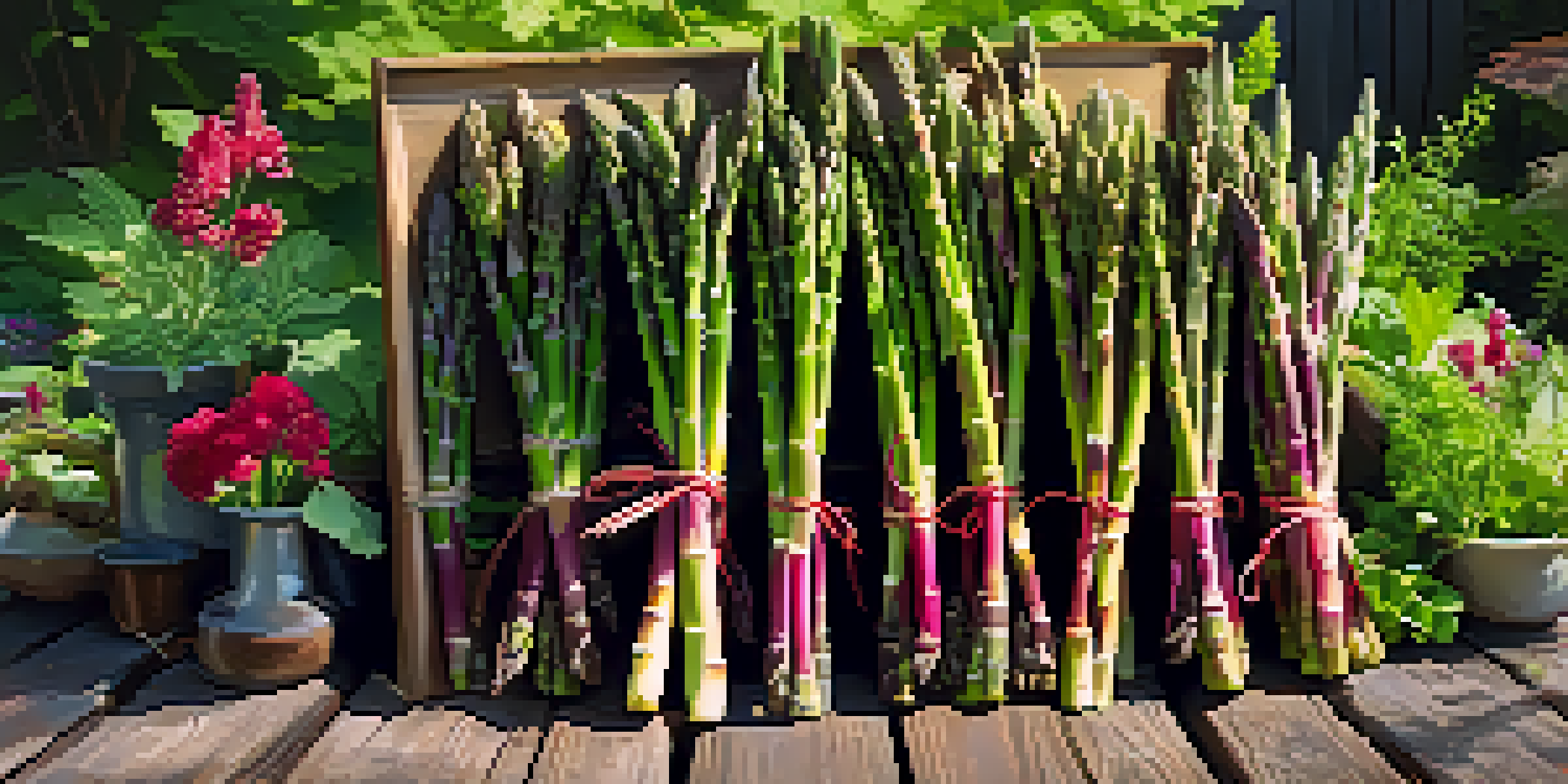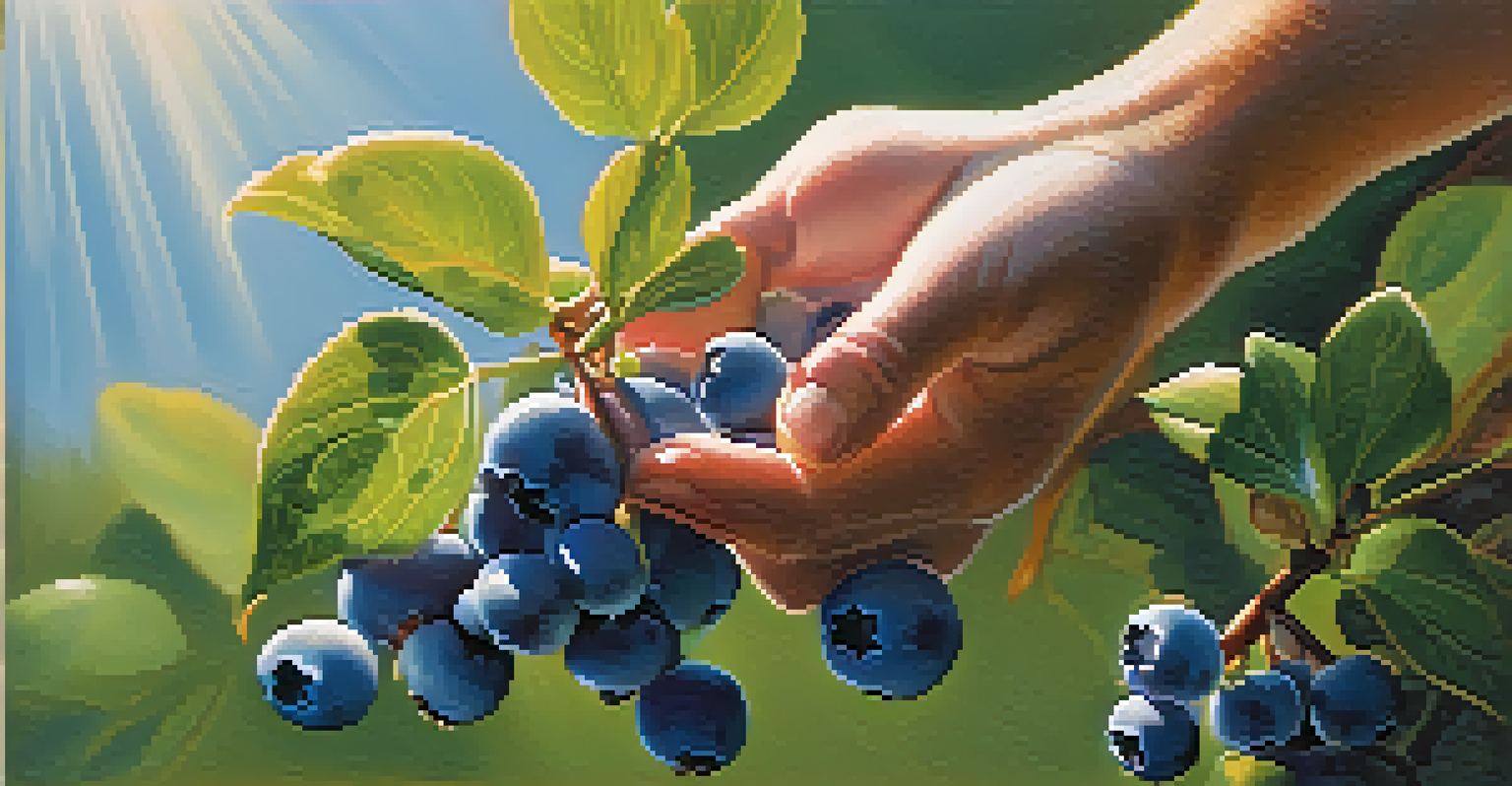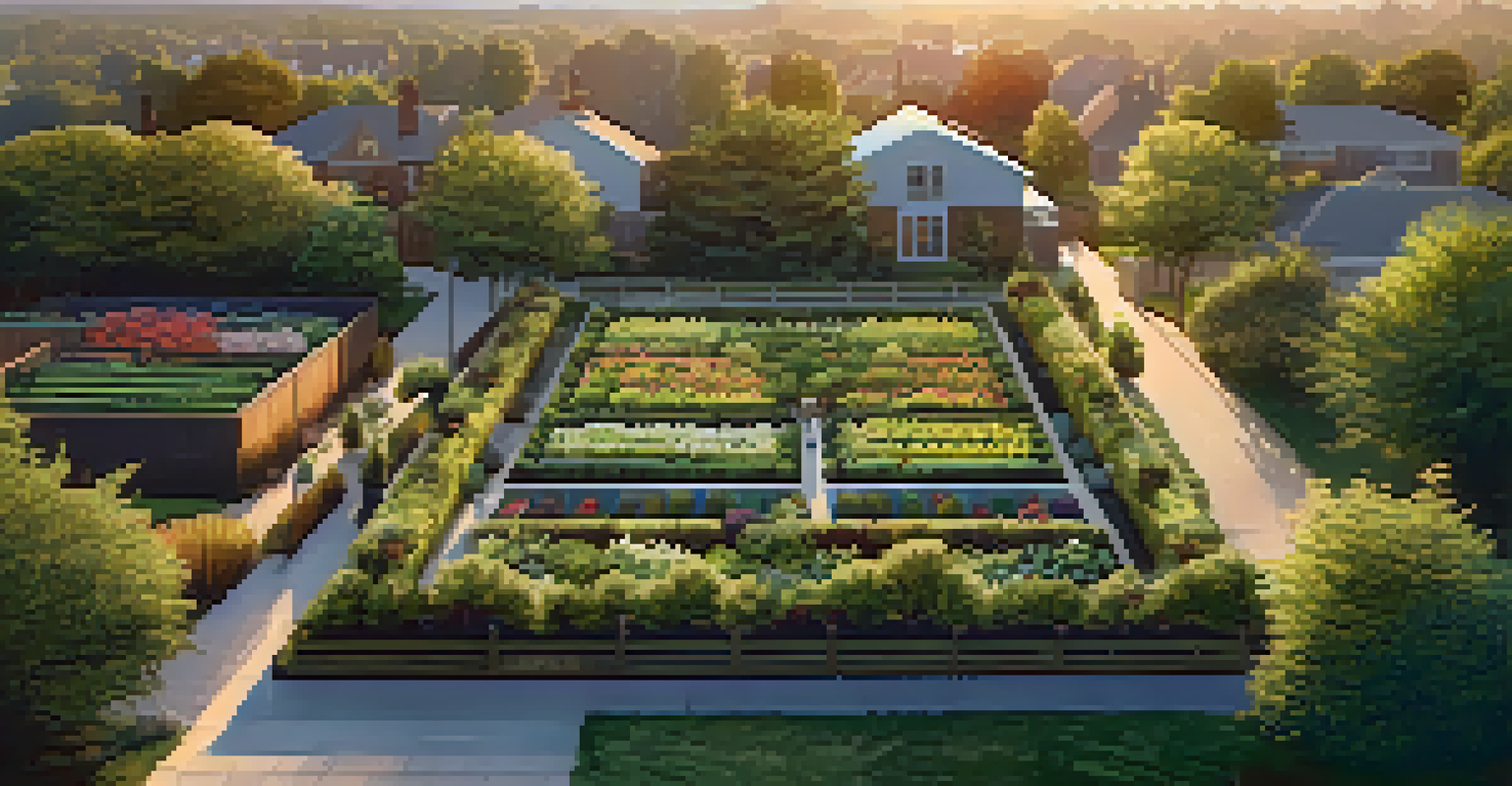Perennial Edibles: Long-lasting Beauty and Nutrition in Gardens

What Are Perennial Edibles and Why Choose Them?
Perennial edibles are plants that come back year after year, offering a sustainable source of food and beauty for your garden. Unlike annuals, which require replanting each season, perennials grow robustly and can provide harvests for many years. This makes them an excellent choice for gardeners looking to reduce effort while maximizing yield.
The greatest gift of the garden is the restoration of the five senses.
Imagine planting a single asparagus crown that can produce tender spears for 15 years or more! This longevity not only saves you time and money but also allows you to cultivate a more stable ecosystem in your garden. By choosing perennial edibles, you’re investing in a garden that matures gracefully over time, becoming more productive with each passing season.
Moreover, many perennial edibles are low-maintenance and resilient, meaning they can thrive in a variety of conditions. This versatility makes them suitable for both novice and experienced gardeners alike, allowing anyone to enjoy the benefits of a lush, productive garden.
Popular Perennial Edibles to Grow in Your Garden
Some popular choices for perennial edibles include rhubarb, asparagus, and various herbs like sage and thyme. Each of these plants brings unique flavors and nutritional benefits, enhancing your culinary creations while beautifying your garden space. For instance, rhubarb's striking red stalks not only taste great in pies but also add a pop of color to your landscape.

Another fantastic option is the ever-popular berry bushes, such as raspberries and blueberries. These plants not only produce delicious fruits but also attract pollinators like bees and butterflies, creating a vibrant ecosystem in your garden. Imagine harvesting fresh berries each summer without needing to replant them annually!
Sustainable Food with Perennials
Perennial edibles provide a reliable, low-maintenance source of food that returns year after year, reducing the need for replanting.
Don’t forget about edible flowers like nasturtiums, which are not only beautiful but also have a peppery flavor, perfect for salads. Incorporating a variety of perennial edibles ensures that your garden is not only a feast for the eyes but also for the palate.
The Benefits of Growing Perennial Edibles
One of the most significant benefits of perennial edibles is their sustainability. Since these plants return each year, they require less soil disturbance and reduce the need for fertilizers and pesticides, promoting healthier soil and ecosystems. This is a win-win for both your garden and the environment.
To plant a garden is to believe in tomorrow.
Additionally, perennial edibles help to conserve water. Their established root systems can access moisture deeper in the soil, making them more drought-resistant compared to annuals. This not only saves you time on watering but also aligns your gardening practices with eco-friendly principles.
Moreover, growing perennials fosters biodiversity in your garden. By planting a variety of edibles, you create habitats for beneficial insects and wildlife, which can help control pests naturally. This holistic approach contributes to a thriving, balanced garden ecosystem.
How to Plan Your Perennial Edible Garden Layout
Planning your perennial edible garden layout is crucial for maximizing space and ensuring healthy plant growth. Start by considering the sun and shade patterns in your garden. Most perennial edibles thrive in full sun, so placing them in a location with ample sunlight will yield better results.
Next, think about companion planting, which involves placing plants together that benefit each other. For instance, planting strawberries alongside spinach can help deter pests while maximizing space. Such strategic arrangements can enhance your garden's productivity and health.
Diverse Choices for Your Garden
Popular perennial edibles like asparagus, rhubarb, and berry bushes not only enhance garden aesthetics but also offer unique flavors and nutritional benefits.
Finally, allow for space between plants as they grow to avoid overcrowding. This will not only help with air circulation but also make harvesting easier. With thoughtful planning, your perennial edible garden can flourish beautifully for years to come.
Caring for Your Perennial Edibles
Caring for perennial edibles is generally simpler than for annuals, but they still need some attention to thrive. Regular watering, especially during dry spells, is essential for establishing healthy root systems. Remember, deep watering is more effective than frequent shallow watering.
Mulching around your plants can help retain moisture, suppress weeds, and regulate soil temperature. Organic mulch, such as straw or wood chips, also improves soil health as it breaks down over time. This simple step can significantly enhance the overall vitality of your garden.
Additionally, occasional pruning and harvesting promote healthy growth. For instance, cutting back old foliage encourages new growth and can improve air circulation. By investing a little time in care, you’ll be rewarded with a bountiful harvest and a flourishing garden.
Harvesting and Enjoying Your Perennial Edibles
Harvesting perennial edibles is one of the most rewarding aspects of gardening. Timing is key, as picking your crops at their peak ripeness ensures the best flavor and texture. For example, asparagus is best harvested when the spears are around 6-8 inches tall, while berries should be picked when they are fully colored and slightly soft.
When harvesting, use clean, sharp tools to minimize damage to the plants. This practice not only promotes healthy regrowth but also maintains the overall health of your garden. Remember to enjoy the process and savor the fruits of your labor!
Eco-Friendly Gardening Practices
Growing perennial edibles promotes sustainable gardening by conserving water, reducing soil disturbance, and fostering a diverse ecosystem.
Finally, consider preserving your harvest through canning, freezing, or drying. This way, you can enjoy the flavors of your garden long after the growing season ends. Sharing your harvest with friends and family can also spread the joy of gardening and inspire others to explore perennial edibles.
Incorporating Perennial Edibles into Landscaping
Perennial edibles can seamlessly blend into your landscaping, creating a beautiful and functional garden. Instead of traditional ornamental plants, consider using edibles like fruit trees, berry bushes, and vibrant herb borders to enhance your outdoor space. This approach not only adds aesthetic appeal but also provides fresh produce right at your doorstep.
Think of your garden as a canvas; with the right combination of colors and textures, you can create a stunning visual display that also serves a purpose. For example, a flowering herb garden can attract pollinators while providing culinary delights. The possibilities are endless when you infuse edibles into your landscaping plans.

Ultimately, incorporating perennial edibles into your landscape transforms your garden into a source of beauty and nutrition. It encourages a deeper connection with nature and fosters a sense of pride in cultivating your own food.